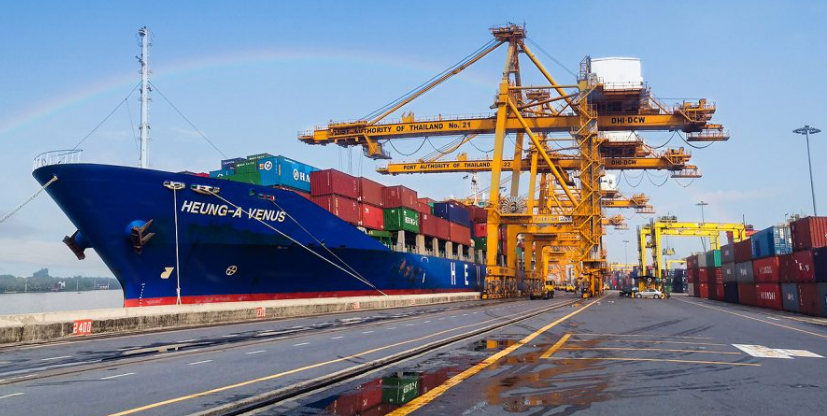Transportation Trifecta
Hello everyone today we are going to see yet another field and try to find out whether the government has brought some changes in the sector or not. Sorry, not field we are going to see three important fields that complete the whole transportation and infrastructural analysis series. If you haven't read my post on road and transport I would recommend you read it after this post. Today we are going to decode the nuances of aviation, railways, and shipways.
Let's start with aviation.
The civil aviation industry in India has emerged as one of the fastest-growing industries in the country during the last five years. Currently, the country has 148 operational airports, including 137 airports, 2 Water aerodromes, and 9 Heliports. Among them are 29 international, 92 domestic, and 10 custom airports. To meet the growing demand for air travel in India, it has become imperative to increase the capacity of airport infrastructure. 60 New RCS routes have commenced w.e.f 01 January 2023 to 21 December 2023. To augment the airport infrastructure the government aims to develop 100 airports by 2024 (under the UDAN Scheme). To date, 74 airports have been developed. More than 2.15 Lakh UDAN flights have been operated and over 1.1 Cr passengers have availed of the benefits of UDAN flights so far.
The projected upsurge in air travel in India would require more aircraft usage, further igniting the demand for Maintenance, Repair, and overhaul (MRO) services. The Indian Civil Aviation MRO market, at present, stands at around $900 Mn and is anticipated to grow to $4.33 Bn by 2025 increasing at a CAGR of about 14-15%. Unmanned aerial vehicles, also known as drones have been welcomed across industries. Indian drone industry is expected to have a total turnover of up to US$ 1.8 Bn by 2026.
Source:https://www.musafirnamah.com/new-on-the-map/
Railway:
First, let's talk about the budget for railways. Indian Railways got a capital outlay of Rs 2.40 lakh crore from the Finance Ministry. This is the highest-ever capital outlay for railways to date. According to the Ministry of Railways, 14 states and union territories have already achieved 100% electrification of rail networks as of March 31, 2023. It’s a remarkable achievement for India sheerly of the fact how environmentally friendly this initiative has been. Further electrification of tracks will not only reduce India’s dependency on imported petroleum-based energy but also enhance the country’s energy security. The Indian Railways aims to achieve 100% electrification in all the states by the December 2023 deadline. The Modi government has expanded the railway network by laying new rail tracks in various states of the country. For example, providing rail connectivity to North East India has been the topmost priority of the Government of India. A rail link from Balipara-Bhalukpong in Arunachal Pradesh, Rangia to Murkongselek and Lumding to Silchar in Assam, Agartala to Kumarghat in Tripura, Arunachal to Jiribam and Kathakal to Bairabi in Mizoram have already been converted into broad gauge. In the latest news, Indian Railways is also expanding its network to Arunachal Pradesh’s Tawang. The Indian Railways has installed an automatic signaling system in 530 Km during 2022-23, as compared to 218 Km during 2021-22, registering an increase of 143.12%. These are the best figures achieved in automatic signaling in the history of Indian Railways. Recently there has been a record allocation of funds for infrastructure and safety upgrades, with a particular focus on the introduction of modern new stations and high-speed Vande-Bharat electric trains, inspired by the Japanese bullet trains.
But does it mean that everything is roses in the ministry? The tragic Balasore, Odisha rail accident which took 300 lives has questioned the government's efforts to reduce train accidents. According to the latest CAG audit report, almost seven out of 10 train accidents between 2017-18 and 2020-21 were due to train derailment. The government has not answered this data from the CAG: According to CAG, 79 percent of funding was reduced in Rashtriya Rail Sanraksha Kosh (RRSK) when Rs 20,000 crore was to be made available every year. Why has there been a huge decline in the amount of track renewal works? Do comment about your opinion.
Shipways
The Ministry of Ports, Shipping & Waterways (PSW) is working diligently towards the achievement of Maritime India Vision objectives. This has resulted in the Ministry's clock growth & improvement across its verticals. The effort put in to modernize, mechanize as well and digitize processes led to positive transformation leading to better cost & time in international trade contributing towards Ease of Doing Business.
The major Indian ports under the Ministry of Ports, Shipping & Waterways, Government of India registered an impressive growth rate in traffic movement at 6.94% during FY2021-22 over the previous fiscal year (Y-o-Y). The five major ports of the country recorded their highest-ever traffic during the year.
The Inland Waterways Authority of India (IWAI), the statutory body in charge of the waterways in India under the Ministry, transported a total of 105 million tonnes of cargo through National Waterways, registering an impressive increase of 25.61% Y-o-Y basis.
The average turnaround time for container vessels at major ports has improved from 43.44 hours in 2014 to 26.58 hours in 2021.
Well, that's from my side today. The government has tremendously invested in these fields but still, there needs a lot of improvements in the fields like accidents. This is where the government is lacking. Do write your opinions as they are valuable. Feel free to contradict my points. Until then see ya😁😁




Comments
Post a Comment